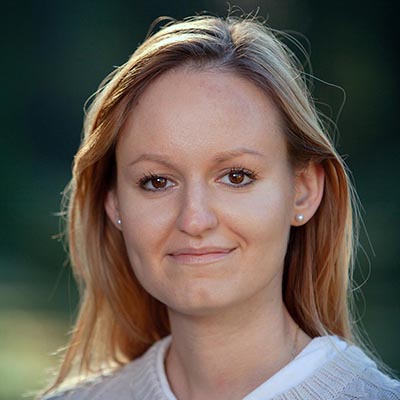Florence School of Regulation Areas ‘converge’ online for the 9th Edition of the Annual Conference on the Regulation of Infrastructures
The Conference on the Regulation of Infrastructures is the annual event that brings together all the Areas of the Florence School of Regulation – Energy and Gas, Transport, Communications and Media, and Water. The 9th edition of the Conference, held from 24th to 26th June 2020, focused on the topic of “Sector Coupling: how to regulate convergence?”, and was unique in the sense that it took place online for the first time since its inception, in order to accommodate the new circumstances brought about by the COVID-19 pandemic.
Despite its virtual format, the conference provided an opportunity for 15 papers to be presented and thoroughly discussed, and culminated in a panel discussion on 26th June, which brought together all the FSR Area Directors. The discussion, moderated by FSR Transport Director Matthias Finger, was kick-started by a keynote speech by FSR Energy Professor and former Director at the Agency for the Cooperation of Energy Regulators (ACER) Alberto Pototschnig, who drew on his experience from the energy sector.
Sector coupling: trends and drivers
Two main trends can be identified in the general debate on sector coupling. Firstly, coupling can be observed within traditional industries, e.g., within the energy sector (e.g., power-to-gas), within the transport sector (e.g., mobility-as-a-service or MaaS), but also within the telecommunications sector (e.g., 5G and mobile technology). In addition, coupling is also taking place across the different industries and sectors, e.g., coupling between telecommunications and all the infrastructures, between transport and electricity driven by the electrification of transport, as well as between water and electricity. This coupling across sectors brings additional challenges related to regulatory approaches and regulatory bodies.
On the one hand, we are seeing a trend towards increasing centralisation, as technology is enabling the pooling of different industries, services and network infrastructures under the same roof. On the other hand, however, we are seeing an opposite trend of decentralisation as new players emerge (e.g., prosumers in electricity and transport), which, in turn, are displacing incumbents. Coupling is manifesting itself in the form of collaboration between incumbents within and across different industries. Furthermore, there are instances of incumbents seeking to conquer neighbouring markets and expand into new industries, especially where these are currently operating in an industry that is in decline (e.g., players in traditional, fossil fuels-dominated industries seeking to expand into newer, renewables-based industries).
Economies of scale and efficiency gains have traditionally been important drivers of sector coupling in network industries. Today, decarbonisation and digitalisation are presenting additional opportunities for sector coupling. Digital technology, in particular, is making it possible to better manage vast amounts of information needed to coordinate complex systems.
“Sector coupling is now possible because we have the technology to manage more complex systems” – FSR Transport Professor Juan Montero
Digitalisation is providing a means to better coordinate, thus facilitating sector coupling. We see that coordination does not necessarily take place in the infrastructure or service layer, but in the new so-called data layer that is emerging on top of them. In this data layer, the data players and platforms are mostly coordinating and contributing to making sector coupling happen. This raises regulatory questions, as traditional players demand access to the data that is generated and managed by the platform in the data layer. This, in turn, is creating new regulatory tensions surrounding the question of data sharing.
Lessons from the energy sector
The energy sector integration is a central pillar of the wider trend towards greater sector integration. In the case of energy, the underlying objective is to better coordinate the planning and operation of the different energy carriers, so as to achieve synergies between the infrastructure and consumption sectors. The impacts of this energy system integration are, however, not necessarily new: heat pumps for domestic heating and electric vehicles (EVs) in transport, for instance, have been around for a while. The role of hydrogen, on the other hand, is more novel as a storage and as a vector for renewable electricity when it cannot be consumed immediately.
This energy system integration offers the most cost-effective pathway to a deep decarbonisation of the energy system in line with the European Green Deal agenda, and enables the reduction of emissions in ‘difficult to decarbonise’ sectors such as buildings, transport, industry and agriculture. Moreover, energy system integration stands to speed up the deployment of clean energy in the electricity sector by providing flexibility and energy storage. Not least, it supports EU leadership in the development of new clean technologies and business models.
Smart regulatory integration
Exploiting these synergies and reaping the associated benefits of systems or sector integration calls for a ‘smart regulatory integration’. Regulators have traditionally looked at the different sectors individually. While some activities have been suitable for competition (both in and for the market), others have needed to be regulated. Infrastructure development is likely to continue to require planning, which too, could be integrated.
Experience has shown that markets integrate more easily. This is because price signals can more easily connect markets and thus, more easily deliver policy objectives at the least cost. Here the EU Emission Trading System (ETS) was pointed out as an illustrative example of a multisector approach to least cost decarbonisation. The idea behind it is to create a market for carbon in order to equalise the marginal cost of abatement and enable the attainment of emission reduction objectives at least cost. This, in turn, has inspired discussions as to whether the renewable energy (RES) targets can also be achieved in a similar way. FSR Gas has recently put forward a proposal for the usage of Guarantees of Origin as the common currency to promote the equalisation of the marginal cost of greening the vectors, and in this way to support the achievement of the overall RES target at least cost. Clearly, however, price signals and markets only work when they are correct. Conversely, if price signals are distorted markets will not work, and this is where regulation will be needed (i.e., ‘regulation as second best option’).
As a result of technological developments, such as digitalisation, some activities which are subject to regulation today, may not need to be regulated in future. In the telecommunications sector, for instance, some 30 years ago third party access (i.e., ‘the last mile’) was hailed as revolutionary. Today, this is hardly the case, as the landscape has been drastically transformed and numerous other ways exist of reaching the consumer. Changes induced by technological developments thus call for a change to regulatory approaches. Having said that, investors strongly prefer regulatory stability, or at least, regulatory predictability.
“The concept of a ‘regulatory toolkit’ might provide the necessary predictability while preserving flexibility in line with a changing environment. The concept includes different regulatory approaches tailored for the different market structures. As the market structure of an activity evolves, the appropriate regulatory approach from this toolkit would be applied” – FSR Energy Professor Alberto Pototschnig
The Commission has hinted at a similar ‘regulatory toolkit’ approach when it comes to energy storage and EV charging. For instance, a market approach could be envisaged initially, and if that proves ineffective then tenders could be introduced. Subsequently, if these fail too, then regulation would be adopted, thus following a clear pathway or ‘step approach’.
The need for a ‘whole-systems’ approach
In the past, regulators have regulated capital expenditure (CAPEX) and operational expenditure (OPEX) differently, whereby incentive-based regulation was applied for OPEX, and cost-of-service regulation in the case of CAPEX. This, in turn, has resulted in distorted incentives for regulated companies leading them to pursue capital-based solutions. Regulators, subsequently, found that one way of avoiding distorted incentives was to regulate TOTEX, whereby both OPEX and CAPEX are regulated in the same manner. In a way, we are now faced with a similar challenge, where due to greater sector integration some activities performed in one part of the infrastructure sector may be benefiting others. This, in turn, may create negative incentives to some actors to act in a sub-optimal way from a holistic perspective. The need for regulators to move away from the silos-approach and shift towards a whole-systems approach was thus underlined.
Also commenting from the energy perspective, FSR Director Jean-Michel Glachant, highlighted the importance of quality in addition to that of correct price signals. Policy makers at different levels have set a range of objectives to secure certain levels of ‘quality’ be it in relation to climate, air, or water. In order to guarantee quality, however, regulators require information, which, in turn, will also have to be guaranteed. The need for standards was underlined as another important aspect that will need to be regulated, drawing on the specific example of standardising EV charging plugs throughout the EU.
“You have to guarantee the signals, the integrity of the signals, and the privacy of the signals. This is where digitalisation will play an unquestionable role. We need to regulate both quality and information” – FSR Energy Director Jean-Michel Glachant
Lessons from the telecommunications sector
One key takeaway from the experience of the energy sector has been that as a first step you would still trust price signals to deal with sector coupling, and only afterwards intervene with regulation if and when needed. In some areas it also looks like regulation is naturally being retreated. The debate in the telecommunications sector, on the other hand, has been different given that ample requests for regulation exist still today.
“This is rooted in concerns about increased market power of certain platforms, which, in turn, is affecting fundamental parts of our society, among which privacy and democracy. The COVID-19 crisis has amplified these concerns. The arrival of new technology, such as 5G technology, holds the potential to be revolutionary, as the first general purpose technology coming from the mobile industry and which may impact all other industries and, in particular, the network industries as well as the way in which they are organised” – Director of FSR Communications and Media Pier Luigi Parcu
Regulatory issues may be exacerbated by technological developments and digital platforms. Digital platforms are transforming the economy, and with that are creating entirely different price signals. Regulation has, thus, been approached with great caution due to the risk of easily loosing efficiencies. In telecommunications and 5G the infrastructure will also have to be developed, whereas the relation of this infrastructure financing with the digital platforms has been a serious problem for many areas of infrastructure.
Lessons from the water sector
“Sector coupling will make it more difficult for regulators to define simple, precise and clearly understandable and measurable objectives. Objectives will thus be complex. This of course impedes the accountability of regulators. As soon as you have to regulate several sectors simultaneously without impeding innovation, it becomes challenging” – FSR Water Director Stephane Saussier
Regulation will have an important role to play in restoring confidence in regulators. Drawing on the experience of the water sector, the question of investment was also raised and, in particular, whether it would be more effective to regulate it at the whole system level. Many public services in Europe today are characterised by strong underinvestment, in particular in the South of Europe and in the case of water. This was clearly illustrated in a recent OECD report presented at the FSR Water Conference, which took place in Florence in February 2020.
Rethinking of regulatory approaches and regulatory bodies
Sector coupling is not only questioning regulation and regulatory approaches, but also the regulatory bodies. It is opening up the question of the scope and mandate of these regulatory bodies. The need for a holistic approach to regulation, by means of establishing a single regulator that would regulate water, energy and environmental issues jointly, resonated among the panellists. In Italy, Spain and the Netherlands, for instance, single regulators covering all of these sectors have already been established. While a sole regulator may not be a silver bullet, it does facilitate a common approach as opposed to having to coordinate among the different responsible agencies.
The papers presented at the Annual Conference clearly illustrated that Europe, if acting as individual countries as opposed to a Union, is lagging behind in the innovation race. While sector coupling is increasing the rate of innovation, it is also increasing the risks. This, in turn, calls for investment flexibility in order to avoid stranded assets and moreover opens up the question of how to regulate with flexibility so as to ensure efficient investments are made. Sector coupling might, furthermore, increase asymmetric information between regulators and utilities, non-verifiable issues and transaction costs.
Encyclopaedia approach to sector coupling?
Coupling has followed different evolutions and may have different meanings across the different industries. This means that an ‘encyclopaedia approach’ to sector coupling may not be necessary or even desirable.
‘If we talk about an encyclopaedia on sector coupling, we need to identify which chapters are unavoidable in this book, and, conversely, which ones can still be handled at the local level’ – FSR Energy Professor Alberto Pototschnig
An analogy was drawn to the subsidiarity principle in Europe, whereby EU regulation only address matters at European level what cannot be satisfactorily addressed at the national level.
“For a long time we have been using gas to produce electricity, we have been using electricity to power trains, and we have been using trains to deliver mail. We never thought of calling it a sector coupling, as this was the normal value chain” – FSR Energy Professor Alberto Pototschnig
In conclusion, the best paper prize was awarded to Prof. Sock-Yong Phang for her paper on ‘The convergence of water, electricity and gas industries: Implications for PPP design and regulation’ which was particularly well-targeted to the topic of the conference. The paper explores the highly relevant case of Singapore, and presents how the case of non-sectoral regulations of converging sectors can potentially lead to big problems and in this particular case to bankruptcy. A runner-up award was given to EUI PhD Researcher Linus Hoffmann for his paper on ‘Three entitlement problems in the digital economy and how antitrust (re-)allocates property rights’.
Looking ahead
Next year’s Annual FSR Conference, which will take place on 10th and 11th June 2021, will focus on ‘Investment challenges: How to reconcile competition, digitalisation and decarbonisation?’. Investment has traditionally been a challenge in network industries, and it appears to be exacerbated by the spread of COVID-19 which is adding another layer of uncertainty. In parallel, significant investments will need to be channelled into infrastructure to align with the Commission’s decarbonisation and digitalisation objectives. Do we have the right incentives for these investments? Do we have free riding opportunities? These are some of the questions that the conference will seek to discuss.
Related links:






